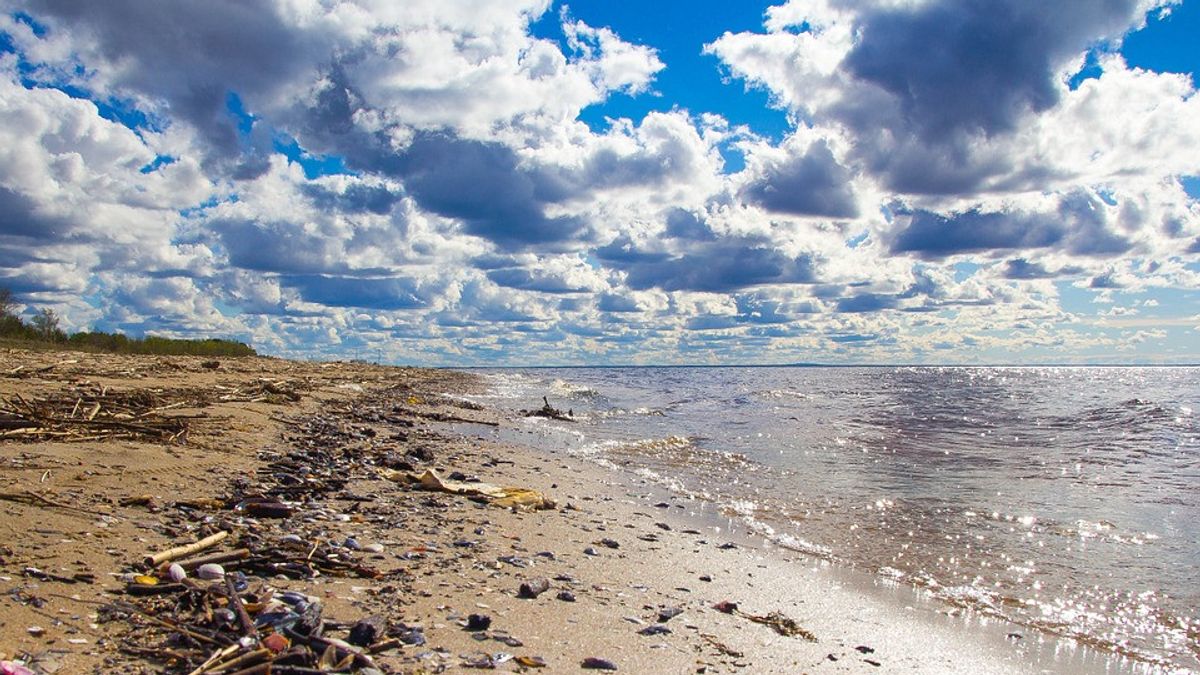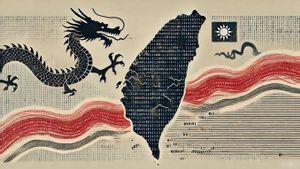JAKARTA – Scientists have created a surprising animation showing how tiny pieces of plastic move around Earth's oceans.
The researchers used NASA satellite data to track the movement of microplastics – tiny pieces of plastic less than five millimeters in diameter.
Their animation shows high concentrations of microplastics around the South China Sea and the Gulf of Thailand, as well as the west coast of Central America.
Plastic that falls into our rivers or is swallowed up by tides on the coast gets carried away by currents before ending up on the high seas.
This plastic is broken down by waves and sunlight into tiny microplastics, which can be mistaken for food by marine life with fatal consequences.
Eventually, the plastic gets trapped in the center of ocean basins or subtropical 'gyres' – massive systems of rotating currents in each of the five major oceans.
Unfortunately, the world's five subtropical gyres can continue to be a place of 'garbage patches', consisting of plastic waste, fishing gear, and other debris.
The Great Pacific Garbage Patch, between California and Hawaii, is most famous for the large amount of boat traffic that passes through it. About 8 million tons of plastic flow from rivers and beaches into the ocean every year, according to NASA.
The animation was created by scientists at the University of Michigan and is detailed in a new paper published in IEEE Xplore.
"Concentrations of marine microplastics are known to vary significantly by location, with very high levels in the North Atlantic and North Pacific", they said as quoted by Dailymail.co.uk.
"A new method is presented to detect and image the global distribution of marine microplastics from space", they added.
The animation shows the location and concentration of floating plastic between April 2017 and September 2018.
This shows some seasonal variation in microplastic concentrations – in the Great Pacific Garbage Patch, for example, microplastic concentrations appear to be higher in summer and lower in winter.
This is likely due to more 'vertical mixing' of the ocean when temperatures are cooler. Vertical mixing is the up and down movement of air or water that occurs as a result of temperature differences between fluid layers.
Scientists usually estimate the amount of plastic in marine debris piles by dragging nets behind boats.

However, this sampling method is 'geographically sparse', according to NASA's Earth Observatory, and does not provide an idea of how many plastic concentrations have changed over time.
So University of Michigan researchers developed a new method to map ocean microplastic concentrations around the world.
They used data from eight microsatellites that are part of the Cyclone Global Navigation Satellite System (CYGNSS) mission.
The $157 million CYGNSS projects, launched in 2016, are primarily intended to improve hurricane forecasting.
Radio signals from GPS satellites are reflected off the sea surface, and the CYGNSS satellites detect these reflections.
SEE ALSO:
These measurements already provide scientists with the means to obtain ocean wind speeds, useful for studying phenomena such as storms, but the signals also reveal the presence of plastic.
When there is plastic or other debris near the sea surface, the waves are damped and the sea surface is not as rough as it should be.
"In cleaner waters, there is a high degree of agreement between ocean roughness and wind speed", said Chris Ruf, principal investigator of the CYGNSS mission and one of the two authors of the paper.
"But as you head to the Great Pacific Garbage Patch, you see a bigger difference between wind speed measurements and surface roughness", he said.
The new method will provide better monitoring of marine microplastics and 'support the development and validation of future models', according to the team.
An analysis earlier this year by researchers at Kyushu University found there are 24.4 trillion pieces of microplastic in the oceans and counting.
The English, Chinese, Japanese, Arabic, and French versions are automatically generated by the AI. So there may still be inaccuracies in translating, please always see Indonesian as our main language. (system supported by DigitalSiber.id)


















